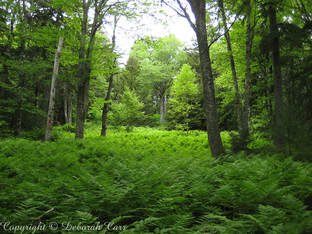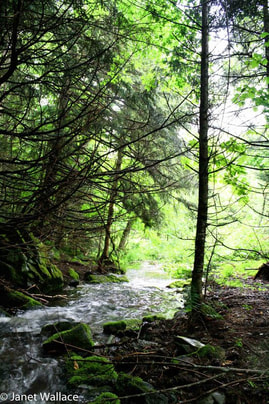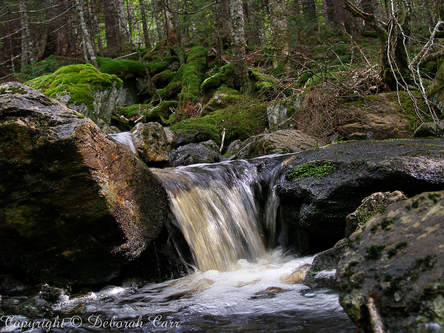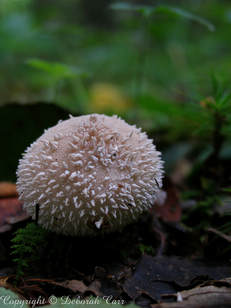
One day, many years ago, I was in the parking lot at the Fundy National Park pool when a car of tourists pulled in beside me. A family of four climbed out. As the parents were busy gathering towels and other articles from the car, their young son wandered over to the edge of the parking lot and stared into the trees.
I watched the child with some concern, as the parents were distracted. Suddenly, he called out, "Dad! Dad! Come here!" His father rushed over.
“Dad…what’s that?” The youngster pointed into the trees and I squinted too, looking for movement of a bird or perhaps an animal. His father seemed as puzzled as I was. “What? What are you looking at?”
 photo: Elgin Eco-Association
photo: Elgin Eco-Association His father paused. “Oh....that’s a forest.”
True story.
In 2017, the Elgin Eco-Association successfully raised enough funds in partnership with the NB Nature Trust to purchase and protect The Mapleton Acadian Forest trail, an area of old growth Acadian Forest in their community that had been slated for clear-cutting. Together, they were able conserve both the property, and the hiking trails and lookouts constructed and used by the community.
The Acadian Forest is a unique ecosystem, indigenous to our area, yet only 1-5% of it remains intact due to aggressive industrial clear-cutting. It is listed as one of the six endangered ecosystems in Canada, so any project that undertakes to preserve these precious forests—in particular the old growth—is a good news story.

Last year, while the Nature Conservancy of Canada (NCC) was inventorying further plots of mature forest along the Fundy Coast, they identified a special area between the Caledonia Gorge Provincial Protected Natural Area and the Village of Riverside-Albert that contained 90% old growth. It also supports two reservoirs that have been the primary water supply for the village for nearly a hundred years, secured under a “water lease,” set to expire in 2019. So, they approached the Village Council and the landowner to see if something might be put in place to protect both these precious resources.
In August 2017, the Nature Conservancy and the town of Riverside-Albert announced a joint effort to raise funds for the purchase and conservation of this 368-acre property. It came at the same time as the City of Moncton was objecting to herbicide spraying on clear-cuts within their own reservoir watershed.

Author Wendell Berry says there is only sacred ground and desecrated ground. To walk within a pristine, natural forest is to walk on sacred ground. I do not say this lightly. Nor do I take the need to protect and advocate for such places lightly.
Our forests are under attack. In 2014, New Brunswick’s Conservative government signed a secretive forestry agreement granting industry an unprecedented 2.5 million cubic feet of timber every year for 25 years—a 20 % increase. The agreement also sacrificed 25% of previously conserved land for logging. And it reduced buffers, increased clear-cut size, while doubling the areas for tree plantations to roughly one-quarter of all Crown forests.

It's never been more critical to protect our threatened watersheds and natural forests, for ourselves, for the wildlife that inhabit them, and for the children who come later. So investing in such undertakings are important projects for our communities.

We may not all be able to protect one natural acre, but projects such as these still allow us to do our part. We can become a People who Protect by contributing, in some large or small way, towards conserving important landscapes for the generations to come. So our own grandchildren may have a chance to walk through a natural, uncut forest. So they may feel the thick moss give beneath their feet, hear the pileated woodpecker hammer for insects, smell forest scents after the rain, search for clusters of mushrooms, or spot a flying squirrel. So they will know the humility and wonder of standing beneath a centuries-old tree; one that is too big to wrap their arms around.
And perhaps as they wander there, they'll also feel embraced and held. And, some way, experience an immense gratitude for those who took action to conserve it.
 RSS Feed
RSS Feed